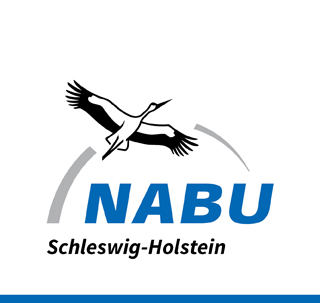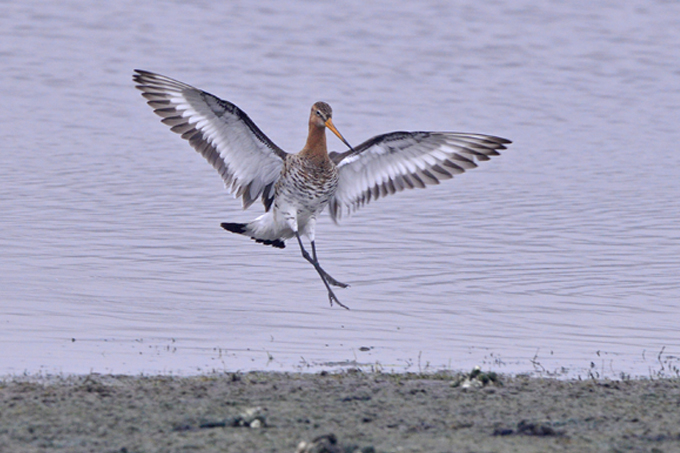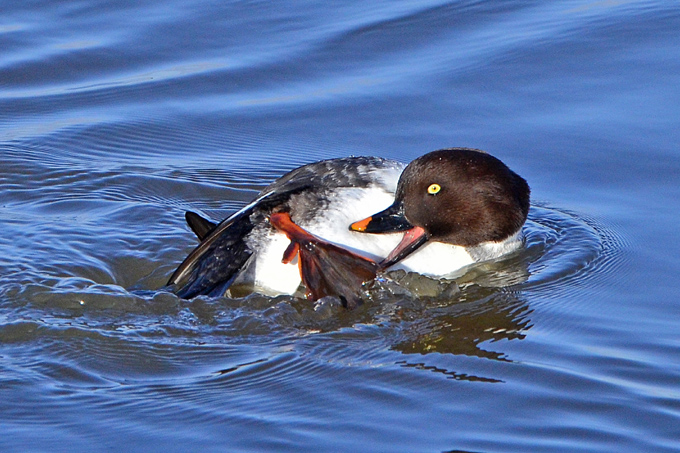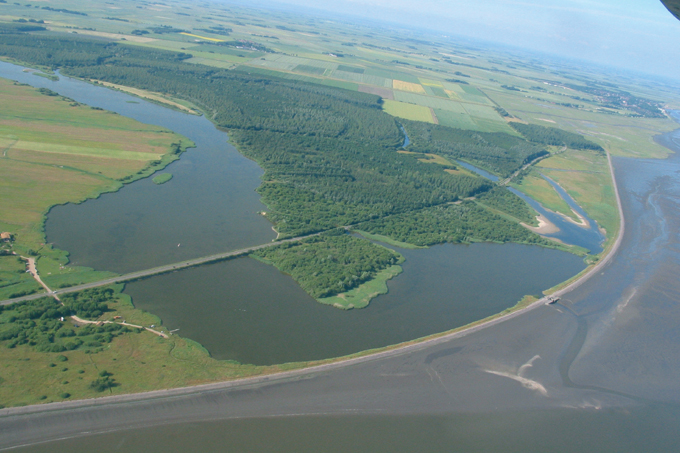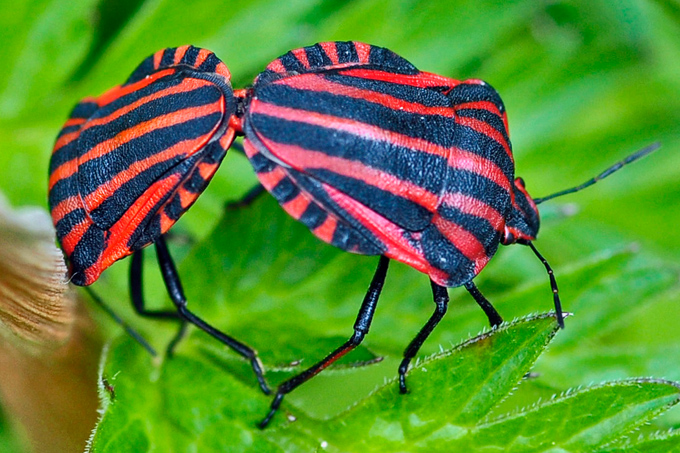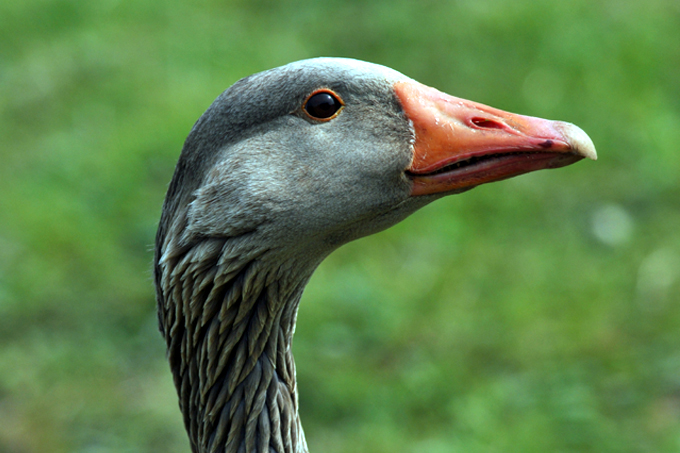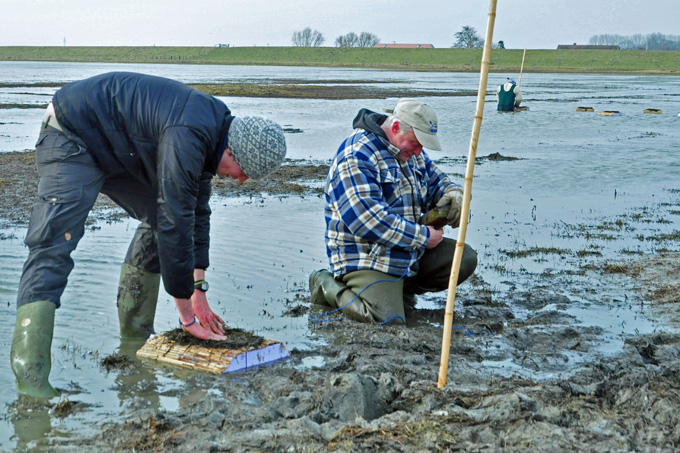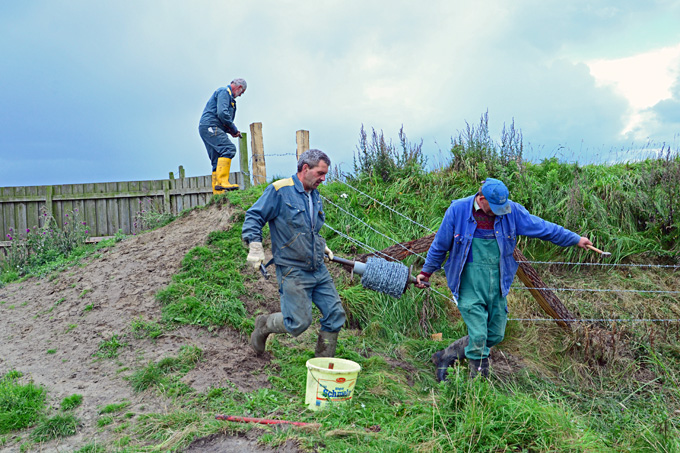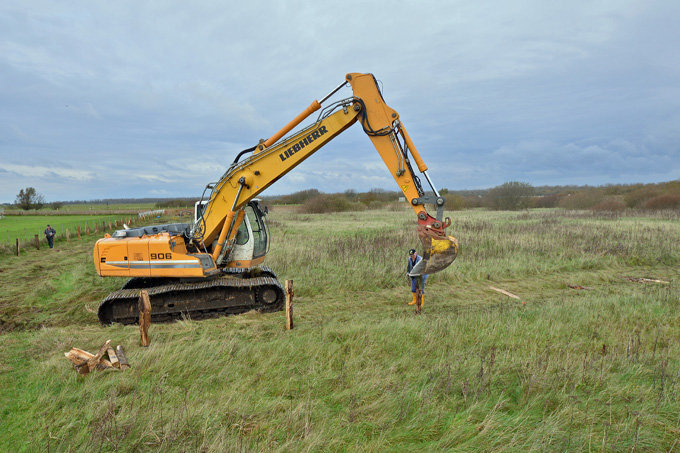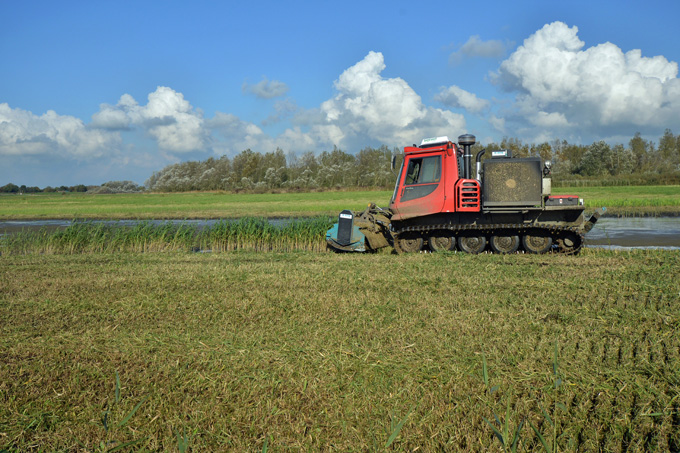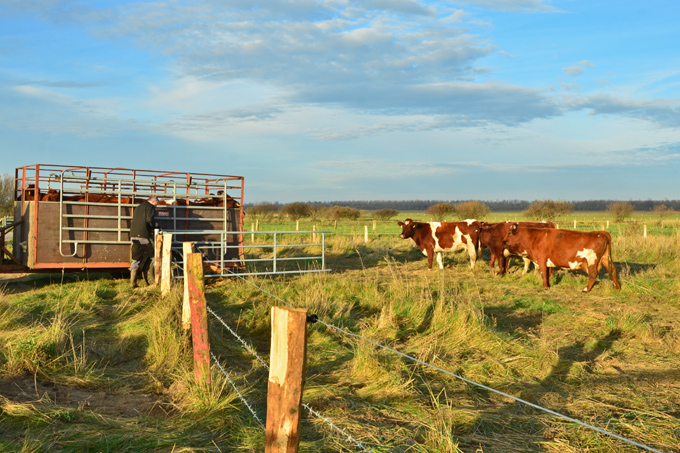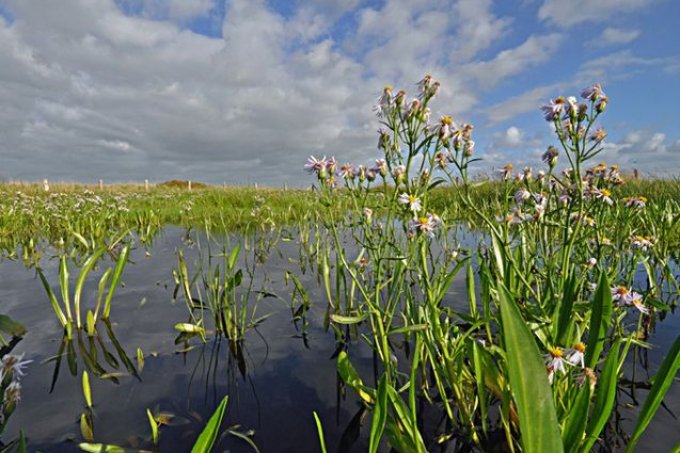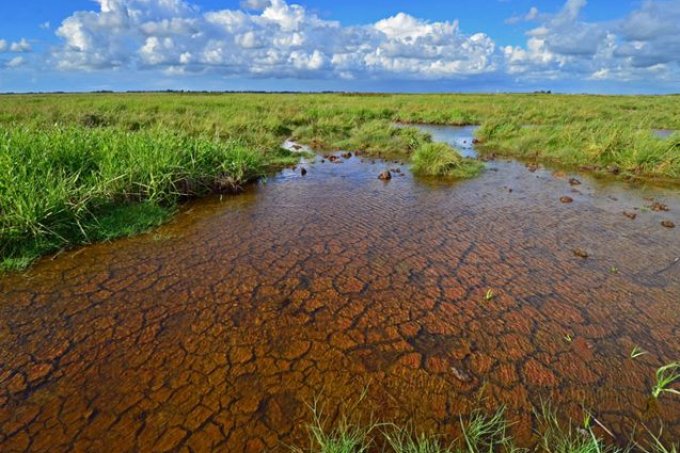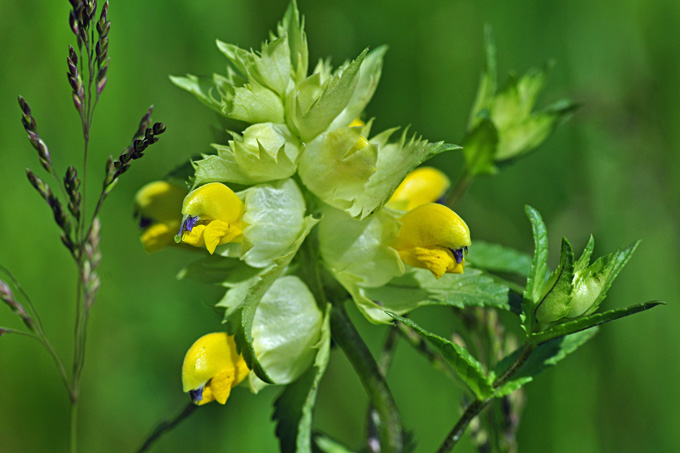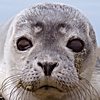Bruthilfen für Trauerseeschwalben werden vorbereitet - Foto: Monika Povel
Role of the reseve
Managed for grassland birds, Katinger Watt is an ideal habitat for a wide range of birds, amphibians, plants and insects.
Where ground-nesting birds now breed and huge flocks of geese overwinter was once tidal mudflats and saltmarsh in the Eider estuary. The land was reclaimed after a flood barrage was built across the mouth of the Eider in 1967–1973. Under the guiding hand of NABU, Katinger Watt has developed into a managed reserve whose chief role is as a habitat for breeding grassland birds, primarily lapwings, skylarks and black-tailed godwits, whose numbers are in decline due to intensive farming.
This same habitat – maintained through extensive grazing; annual mowing; control of sedge, rushes and scrub to reduce cover for predators; and regulation of the water level – also suits overwintering geese, amphibians, insects and orchids. Its location on the East Atlantic Flyway migratory route, close to the sea, the River Eider and North Sea marshes, means Katinger Watt is a regular stop-off for many waders, waterfowl and songbirds.
NABU centre staff and volunteers manage and monitor a further three reserves in the Eider estuary in addition to Katinger Watt, together with the landowner, Schleswig-Holstein federal state, and take part in regular coordinated bird counts. The centre is entirely dependent on donations to fund its work.
-
-
Ein Schott wird zur Wasserstandsregulierung eingebaut - Foto: Monika Povel
-
Im NI-Areal wird ein Weidezaun erneuert - Foto: Monika Povel
-
Die neue halboffene Weide am Speicherbecken wird eingezäunt - Foto: Monika Povel
-
Reet wird mit einer Spezialraupe geschnitten, Fuchsinsel - Foto: Monika Povel
-
Viehauftrieb Weide Speicherbecken - Foto: Monika Povel
-
Neue Salzwiese vor dem Leitdamm - Foto: Monika Povel
-
Dithmarscher Eidervorland - Foto: Monika Povel
-
Weidetiere - Foto: Monika Povel
-
Klappertopf, große Bestände auf den Eiderdammflächen - Foto: Monika Povel
